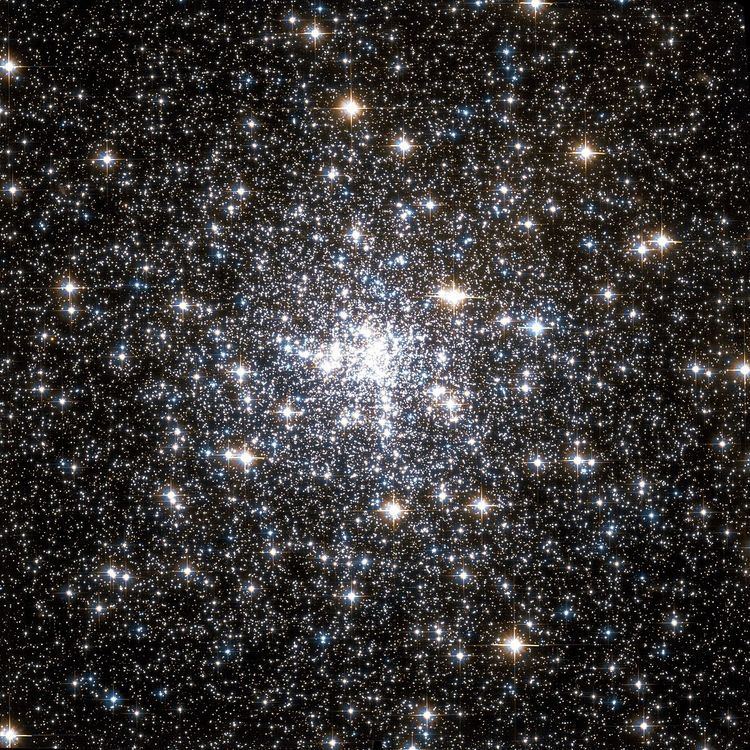Class VI Right ascension 19 10 52.11 Distance 13.0 kly (4.0 kpc) | Declination –59° 59′ 04.4″ Apparent magnitude (V) 5.4 | |
 | ||
NGC 6752 (also known as Caldwell 93) is a globular cluster in the constellation Pavo. It is the third-brightest in the sky, after Omega Centauri and 47 Tucanae, and is best seen from June to October in the Northern Hemisphere.
NGC 6752 was first identified by one James Dunlop of Parramatta on 30 June 1826, who described it as an irregular bright nebula which could be resolved into a cluster of many stars, highly compressed at the centre. This corresponds with a core region densely populated with stars around 1.3 light-years in diameter, which indicates it has undergone core collapse. The cluster lies around 13,000 light-years distant and is one of the closer globular clusters to Earth. It also lies 17,000 light-years away from the galactic centre. It belongs to Shapley–Sawyer Concentration Class VI, namely of intermediate density, and has been calculated to be 11.78 billion years old. There are a large number of binary stars in the system, as well as blue stragglers, which are likely to have been formed by collisions and mergers of smaller stars. The NASA website "Astronomy Picture of the Day" notes that it holds over 100,000 stars in a sphere about 100 light-years in diameter.
The apparent magnitude of the cluster is 5.4, so it can be seen with the unaided eye. However this depends on good viewing conditions with a minimum of light pollution. With binoculars it can be seen to cover an area three quarters the size of the full moon. It lies 1.5 degrees east of 5th-magnitude Omega Pavonis. The nearest bright star is Peacock, which lies 3.25 degrees north and 9.25 degrees east.
Six X-ray sources have been identified in the cluster's core by the Chandra X-Ray Observatory.
